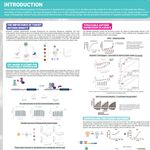Whenever there is cell death, apoptotic cell free DNA fragments appear in the circulation of the host. These fragments, typically 145-160 base pairs in size, represent a minute fraction of total DNA in the host circulation. If care is taken to avoid host cell breakage, the apoptotic DNA fragments can be analyzed to provide information about the genome of the cells that produced them. In pregnancy, analysis of apoptotic DNA fragments has allowed the development of very effective noninvasive aneuploidy testing. Indeed it is possible to reconstruct the entire fetal genomic DNA sequence from these fragments. In cancer it is possible to view copy number, sequence, and epigenetic differences between the tumor and the host by analyzing circulating free DNA. While this work is still at early stages it is reasonable to predict that an array of useful noninvasive cancer diagnostic tests should soon result from such studies. It is furthermore likely that a careful search for informative apoptotic DNA fragments that differ in methylation from DNA in the circulation of a normal host might lead to methods for the early detection of other clinical situations that are characterized by inappropriate cell death. Learning Objectives: Understand why stochastic noise limits the kinds of molecular testing possible from dilute sources like plasma Understand why non invasive prenatal testing can be extremely accurate but not perfect because of biological complexities





